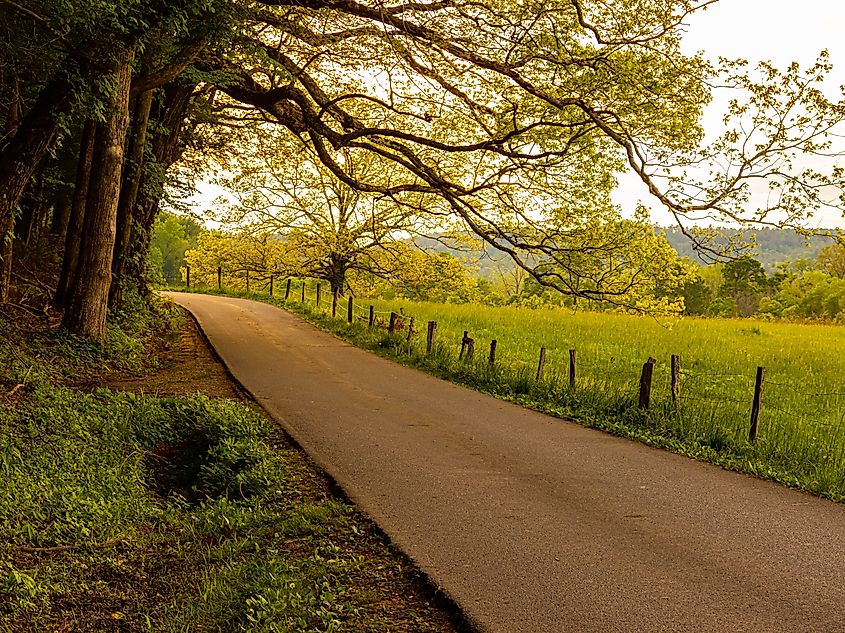Have you ever arrived at a national park only to realize you forgot something important? Maybe it was your rain jacket, or maybe it was extra socks. Either way, being unprepared can make your outdoor trip more stressful than it needs to be. Packing the right items helps you stay safe, comfortable, and ready for unexpected changes in weather or terrain. Many parks, like the Great Smoky Mountains National Park, span large areas with limited resources once you’re inside. For instance, Cades Cove is a popular destination within the Smokies, and it’s important to be ready for the scenic loop and hiking trails there.
In this blog, we will share exactly what to pack for your next national park adventure so you’re ready for whatever nature throws your way.
Clothing Layers for Changing Weather
The weather in national parks can shift fast, especially in places with high elevations or large temperature ranges. It might be sunny when you start your hike, but by the afternoon, you could be dealing with wind or rain. That’s why layering your clothes is one of the smartest ways to dress for outdoor adventures.
Start with a moisture absorbing first layer so sweat doesn’t gather on your skin. Put on a warm layer like wool and finish with a windproof or waterproof jacket. Don’t forget lightweight gloves and a hat for early mornings or cooler nights.
Footwear for All-Day Exploring
Your feet do most of the work during a national park visit, so proper footwear matters more than you might think. Hiking boots with ankle support are great for rocky or uneven trails, while trail runners might be better for smooth paths. Choose shoes that are already broken in to avoid blisters. If your trip includes driving through scenic areas like the Cades Cove entrance in the Great Smoky Mountains, you may also want comfortable walking shoes for short strolls and sightseeing. Visit My Smokies recommends wearing supportive shoes even for shorter walks, as gravel paths and uneven terrain can surprise unprepared visitors.
Besides your main footwear, pack a backup option. This could be sandals for around the campsite or water shoes if you’re planning to explore streams or waterfalls. Extra socks are essential, especially if it rains. Wet socks can lead to cold feet or blisters, which can make even a short walk feel long. Keeping your feet dry, protected, and supported can help you enjoy your trip without discomfort. Don’t forget to bring a small bag to store muddy or wet shoes at the end of the day.
Food, Snacks, and Water
When you’re out exploring, your body needs fuel to keep going. Even if you don’t plan a long hike, snacks are a must. Pack high-energy, portable foods like trail mix, energy bars, dried fruit, or peanut butter sandwiches. Avoid anything that melts or needs refrigeration. These snacks can keep your energy up between meals, especially if your adventure runs longer than expected. Eating regularly also helps you avoid dizziness or fatigue.
Water is even more important. Always bring more than you think you’ll need. A good rule is at least two liters per person per day. Bring a refillable bottle or hydration bladder for convenience. If you’re hiking far from water sources, pack a water filter or purification tablets. Dehydration can happen fast, especially in warm or dry climates. Drink often, even if you’re not thirsty, to stay hydrated and alert. Keeping your body well-fed and hydrated helps you enjoy the park without feeling drained.
Safety Gear and First Aid
Accidents can happen even on the easiest trails. A small first aid kit is one of the most important things to include in your backpack. It should have bandages, antiseptic wipes, adhesive tape, tweezers, and pain relievers. If you’re going into areas with ticks or thorny bushes, include insect repellent and sting relief. Some people also pack allergy medicine and blister pads just in case. Being ready for scrapes or headaches can make your trip smoother.
Along with first aid, bring a whistle and flashlight with extra batteries. These can help if you get lost or end up out past sunset. A multi-tool or pocketknife is useful for unexpected needs, like cutting rope or opening packages. Even if you never use these tools, it’s good to have them. Being prepared with simple safety items gives you peace of mind and helps you respond quickly if something goes wrong.
Sun Protection and Bug Defense
Sunburn can sneak up on you even when it’s cloudy or cool. Sunscreen with a high SPF is a must for any outdoor trip. Apply it in the morning and reapply every few hours, especially if you’re sweating or near water. Lip balm with SPF also helps protect your mouth from drying out or burning. Sunglasses with UV protection and a wide-brimmed hat shield your face and eyes from harmful rays.
Bugs can also become a problem depending on where and when you travel. Mosquitoes and ticks are common in wooded areas and near water. Bring bug spray with DEET or a natural repellent if you prefer. Wear long sleeves and pants in areas with heavy insect activity. You might even consider a bug net if you’re camping. Taking a few minutes to protect your skin can save you from hours of itching later.
In conclusion, heading into a national park is more than just a getaway—it’s a chance to connect with nature, take a break from screens, and enjoy the simple beauty of the outdoors. But to truly enjoy your adventure, you need to prepare for everything from weather changes to long hikes. Every item in your backpack serves a purpose, and the right gear helps you explore safely and comfortably. Think ahead, pack light but wisely, and your time in nature will be unforgettable.








/socialsamosa/media/media_files/2zHb3sGz3BcGQQrVtOoh.png)
